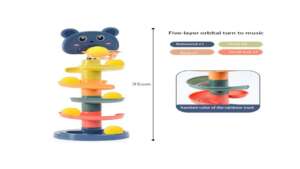
 For at least a short period of time, the child delights in seeing the ball roll from top to bottom – much like a frozen middle management team takes temporary delight in seeing (and measuring) the success of a project that has been tightly controlled and is completely predictable (and measurable). However, the child soon grows bored and looks for some other novelty. Similarly, the frozen middle management team soon find the predictably successful projects to no longer be motivating.
For at least a short period of time, the child delights in seeing the ball roll from top to bottom – much like a frozen middle management team takes temporary delight in seeing (and measuring) the success of a project that has been tightly controlled and is completely predictable (and measurable). However, the child soon grows bored and looks for some other novelty. Similarly, the frozen middle management team soon find the predictably successful projects to no longer be motivating.
Professionals who are constrained by the frozen, hard-boundaried pathway, will first refuse to use it—or they will point out that the balls fall out into chaos if tilted this way or that. Rigid pathways in healthcare inevitably confront unique patient situations that can’t fit into any pre-ordained or pre-structured pathway. The uniqueness of human conditions and the complexity of challenges makes such rigid, siloed pathways even risky. For example, an Obstetrician, Midwife or Family Physician is unable to over-ride a Labor and Delivery Protocol that requires them to perform a risky C-section. An alternative path that the physician or midwife might take things in this unusual situation would likely result in a healthy baby via a vaginal delivery. In seeking cohesion and predictability, over-constrained clinical pathways can become risky and even dangerous.
The management team is “frozen.” It becomes risk-aversive—yet doesn’t want to take a chance. It would be a “disaster” if the ball were to flip out of the desired pathway. There are no plans for this to occur. This would be an “unimaginable” condition—what Nasim Taleb calls a “black swan” (Taleb, 2010). If the ball were to flip out of the child’s toy, then the child is likely to cry and even have a tantrum. And the ball could end up almost anywhere (bouncing on the table and then on the floor only to end up under a piece of furniture). If the only option is a disaster and the potential of outright chaos (the ball bounces all over the place) then it can be fully appreciated that the management team is frozen in fear of taking a risk. In essence, these overly rigid clinical pathways try to replace the Chef with the Recipe—and most of us realize a Chef can make a masterpiece meal without a Recipe, and a novice can make a disaster even while following a recipe religiously. Humans are not ingredients. They are far more complex and dynamic. Clinicians must have softer boundaries with flexibility to customize to each unique patient.








